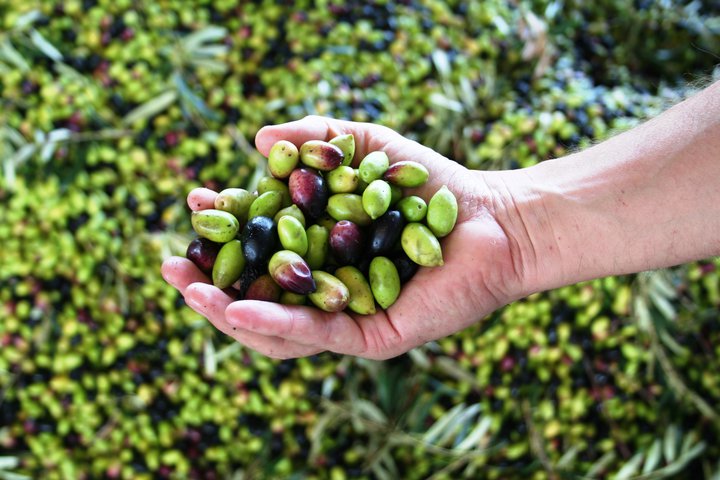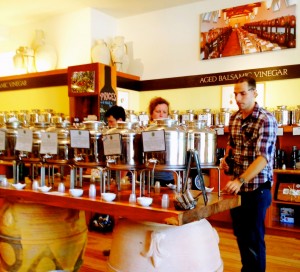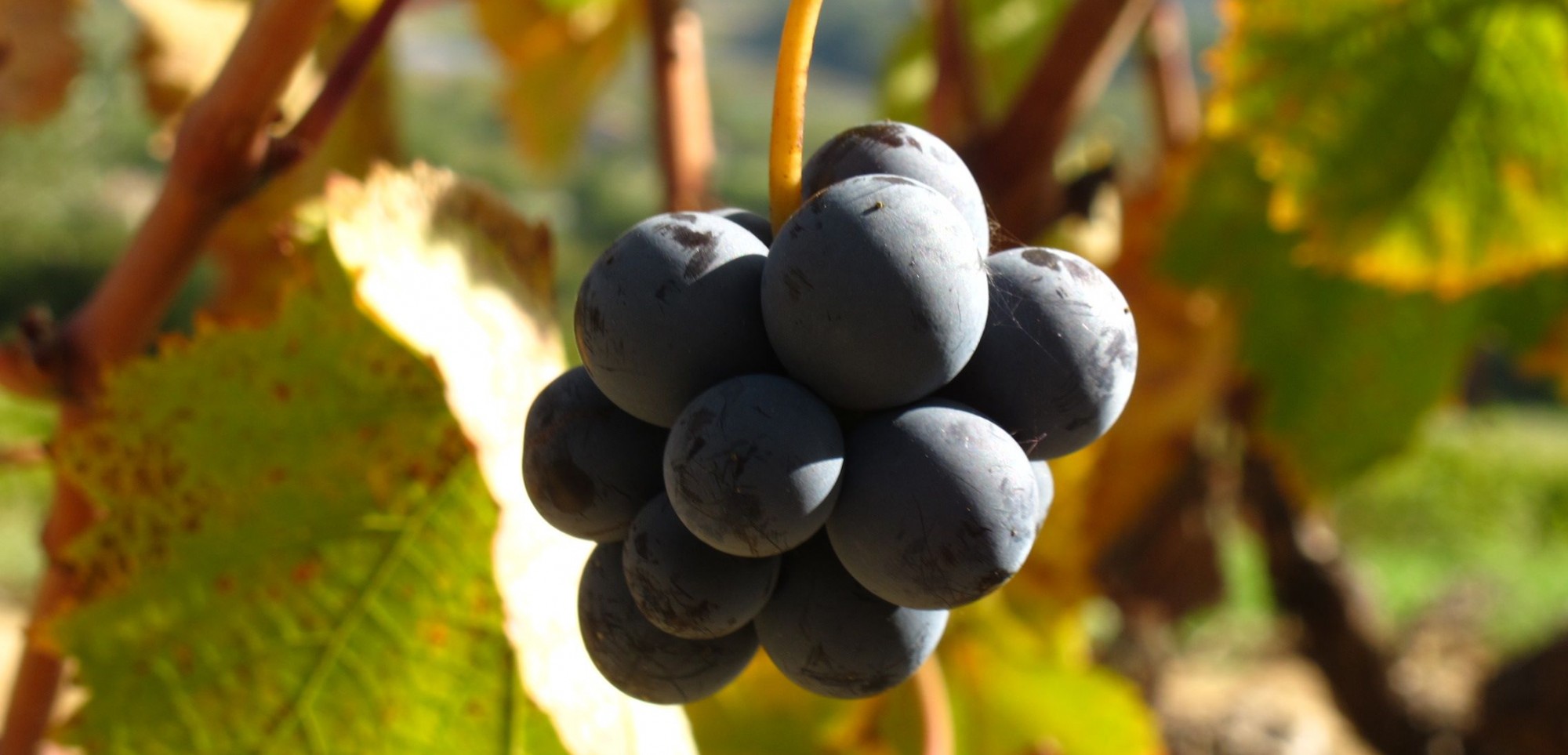Refine Your Palate With Olive Oil
“It’s Berkeley” is a phrase I hear a lot. You made your bike out of kelp and plastic bottles? You’re on the Macro-Antarctic diet? Your kids love Tunisian Chemlali extra-virgin olive oil? I haven’t actually heard any of those questions, but I did experience the last one firsthand at Amphora Nueva, a mecca of oil and vinegar in Berkeley. A preteen and his mom were picking up the oil that he preferred, and just before paying, she asked him, “Are we OK on balsamic?” He nodded. I’d read about Amphora Nueva and was eager to taste their wares, so I made an appointment to chat with Nate Bradley, a third-generation olive oil merchant.

Photo courtesy of Amphora Nueva
“What we look for in the oils we carry are freshness and chemistry,” Nate said. “Think of olive oil like produce. It does go bad and you lose its health properties when it does.” Pointing to the center table, where 12 fustis of oil were lined up, Nate started talking about FFAs and polyphenols – I was already starting to feel lost. And I hadn’t even tasted any oil yet.
“Sorry – what are polyphenols?” I asked Nate.

Nate Bradley assisting a customer at Amphora Nueva’s tasting bar of the newest olive oils
“Think of them as tannins,” he explained. “The stronger the oil, the more peppery and bitter it is, the higher the polyphenols and the antioxidants. FFAs are ‘free fatty acids.’ The lower the FFA [percentage], the higher the smoke point.”
FFAs increase based on water and oil contact: that is, the longer pressed olive oil is in contact with the vegetal water that remains from the fruit, the higher the FFAs. Freshness in olive oil equates to pressing the fruit as soon as possible after picking, and also separating the oil out lickety-split from there. The burning sensation and peppery flavor you’ll notice in extra-virgin olive oils are signposts of freshness.
“The peppery note gets knocked down a lot with cooking,” Nate said. “We bake a lot with olive oil and recommend higher-count polyphenol oils for that.” After tasting through a number of oils, I honestly couldn’t say which one I preferred. I’d have to cook with one to know. But another way to discover what’s good is to find out what’s bad.
“We,” Nate said when nodding to Claire, his sister and Amphora Nueva’s general manager, “can taste when chefs use oil that’s gone bad. It has a putty-like, crayon, waxy flavor to it. Not good.” He poured me a taste of rancid oil and the only thing I could discern was that it didn’t taste like much at all. I did not get the feeling that I was back in preschool eating a Playdoh burger – thank goodness. But the lively notes I’d tasted in Amphora Nueva’s oils, ranging from grass to spice to even banana candy, weren’t present in this oil. It also had a different, unappealingly thin texture. Comparing this oil to the ones I’d tasted from the fustis reminded me of when I tasted a well-made wine for the first time in its ideal milieu – right glass, temperature and company. My appreciation of wine began from that moment on.
One day I hope to achieve Nate’s level of olive-oil tasting, culled from years of tasting and teaching and traveling the olive-oil-producing regions of the world. Amphora Nueva carries olive oil from the usual suspects such as Greece, Spain, Portugal, California and Italy, but also some countries you may not associate with olive oil: Australia, South Africa, Tunisia, Chile, Argentina and even Peru. For now, I’m more than content to experiment with new oils I bought, particularly a low-FFA one I picked up for deep-frying. Ever heard that you can’t do that with olive oil because the smoke point is too low? Yeah, that’s false. I’m off to look up some falafel recipes.
